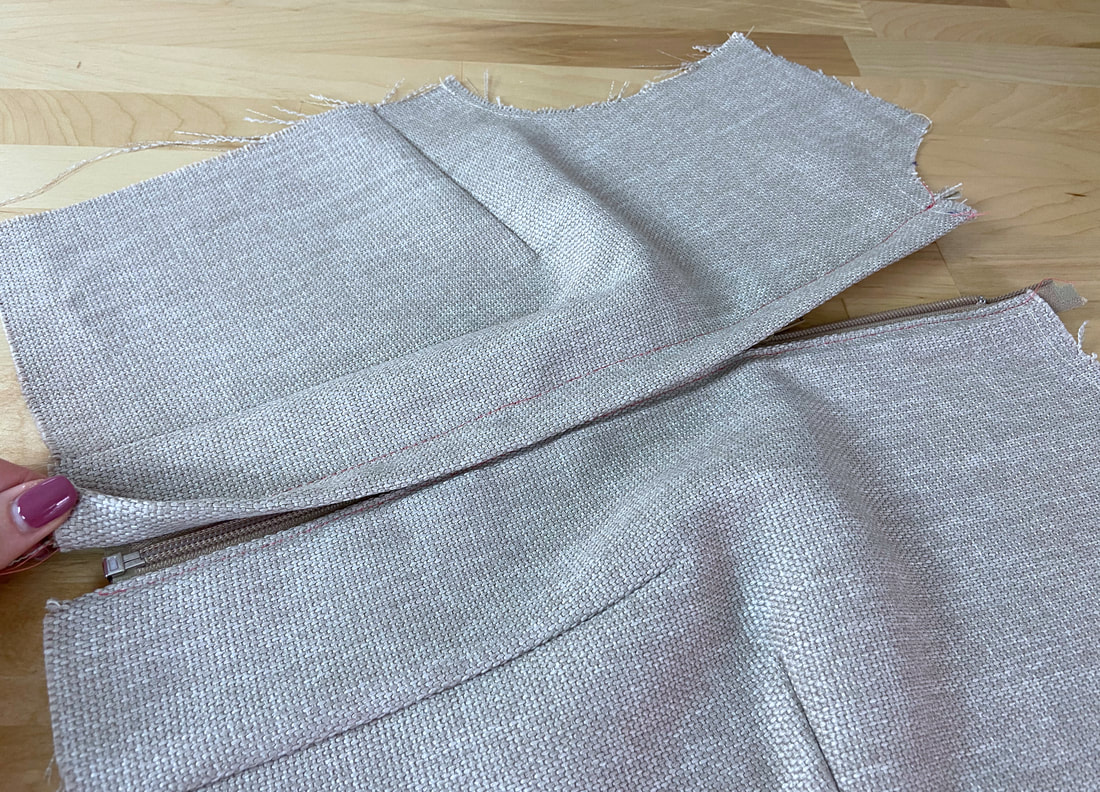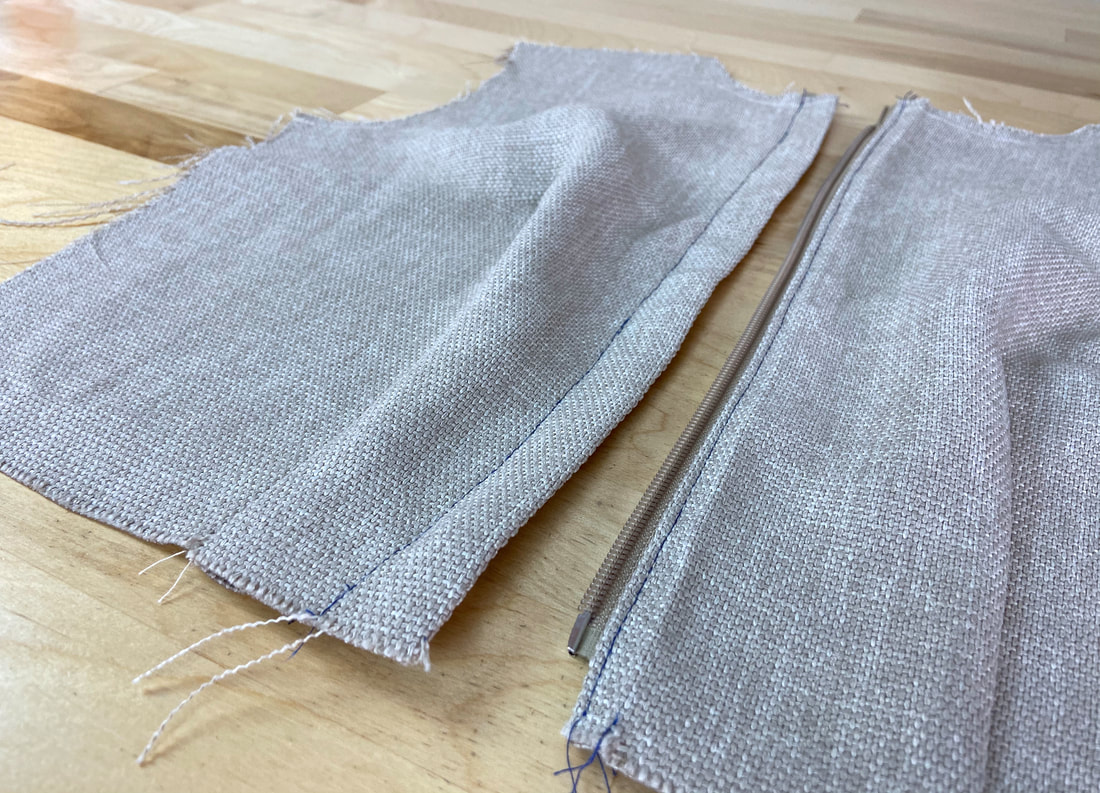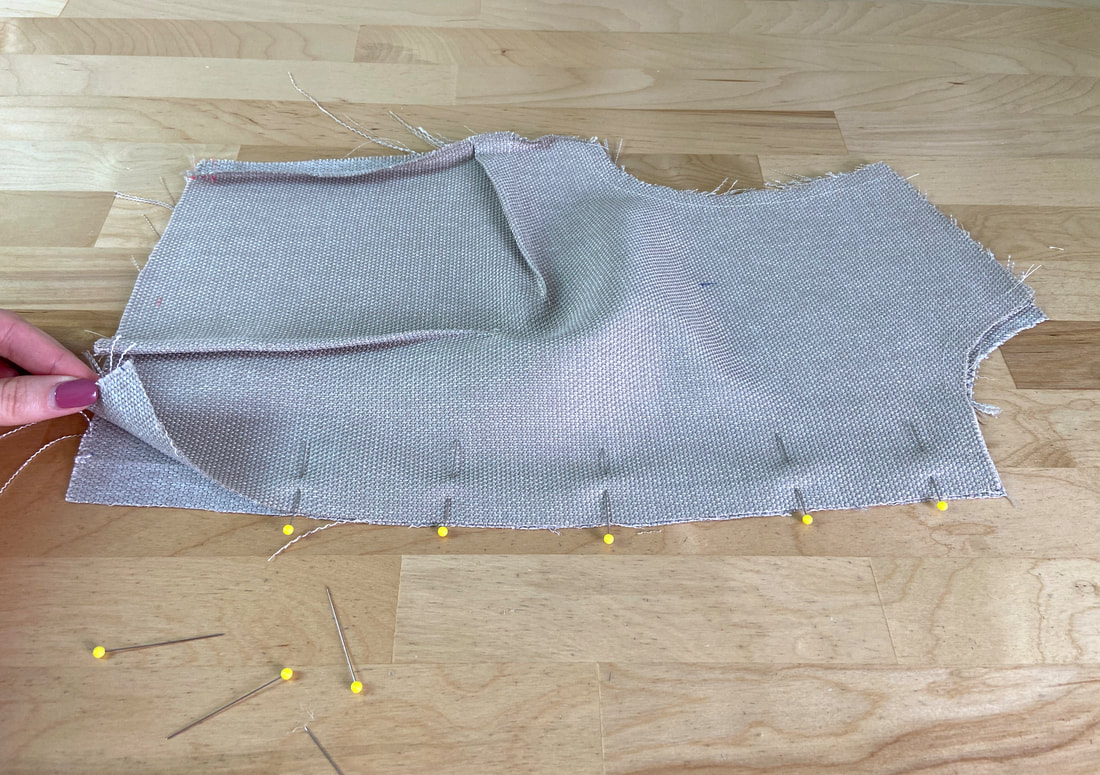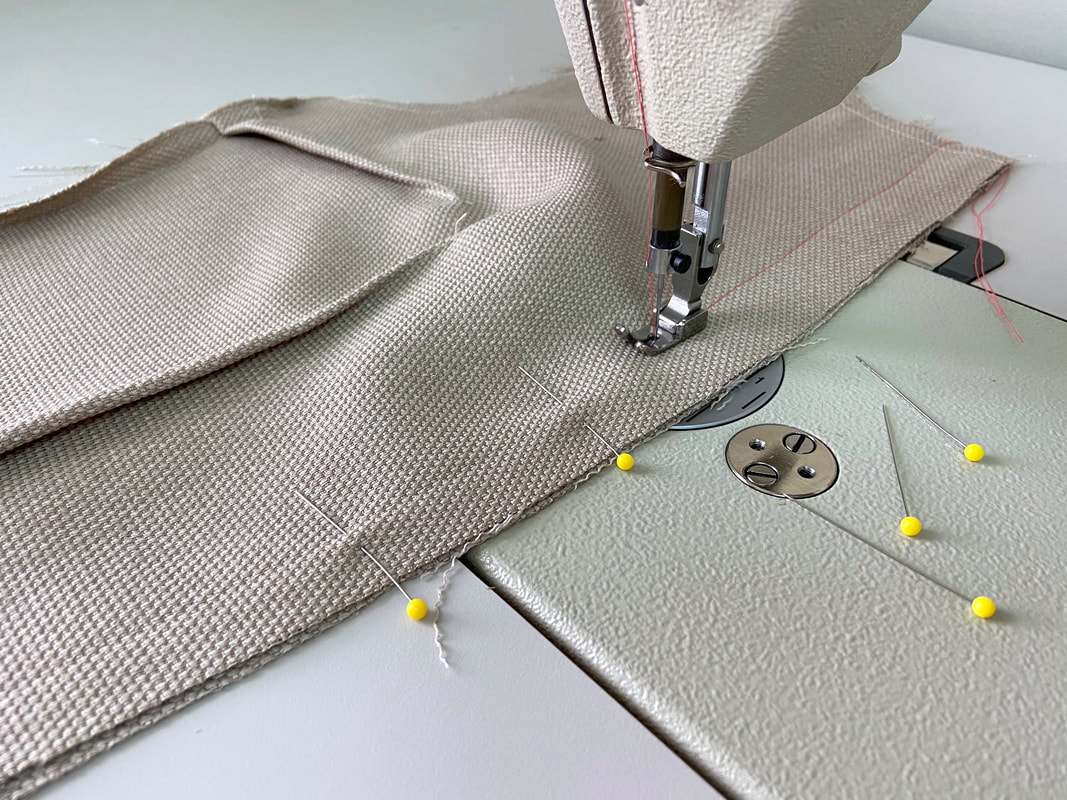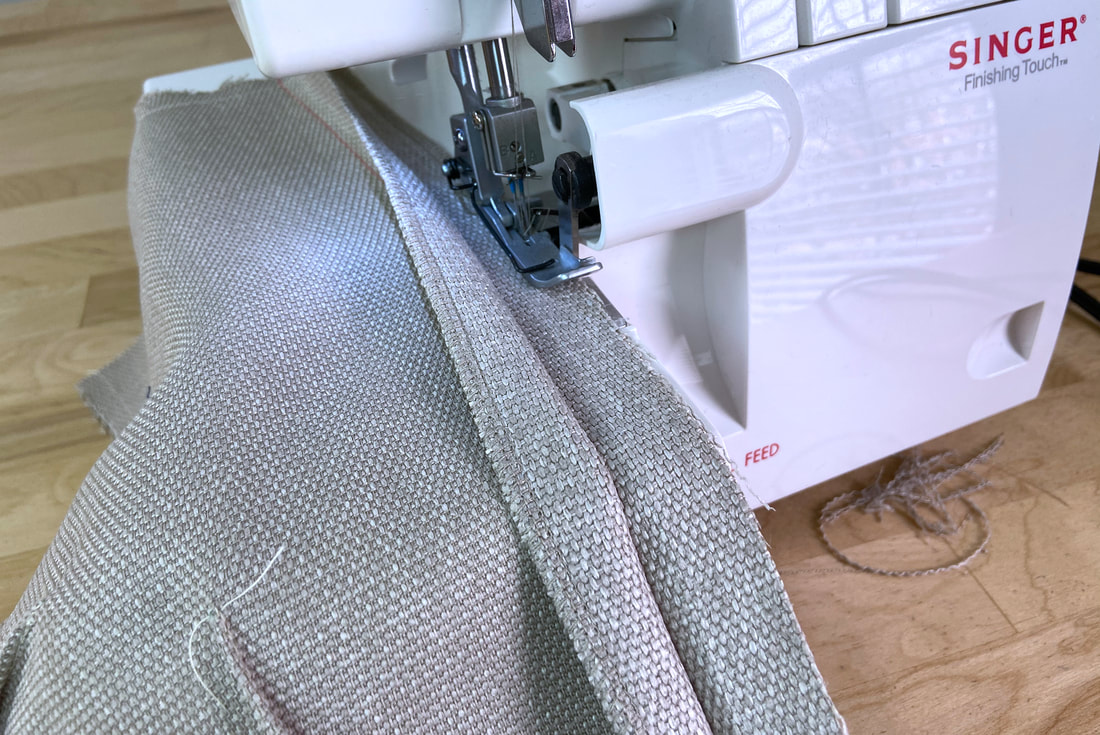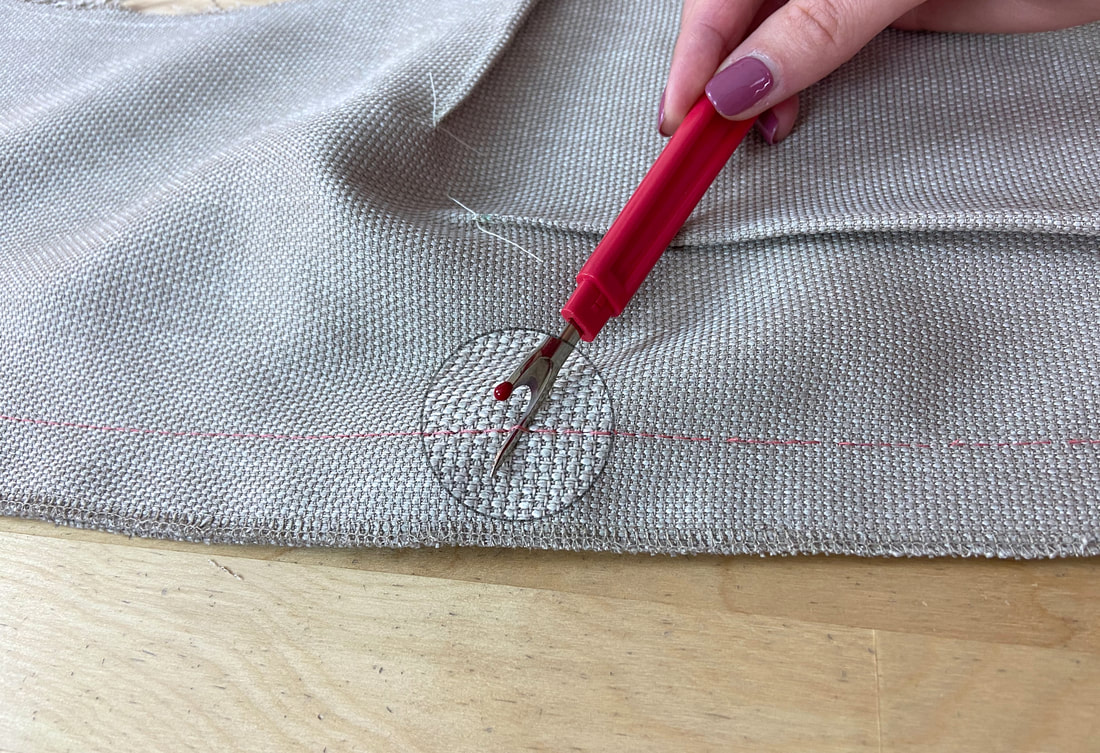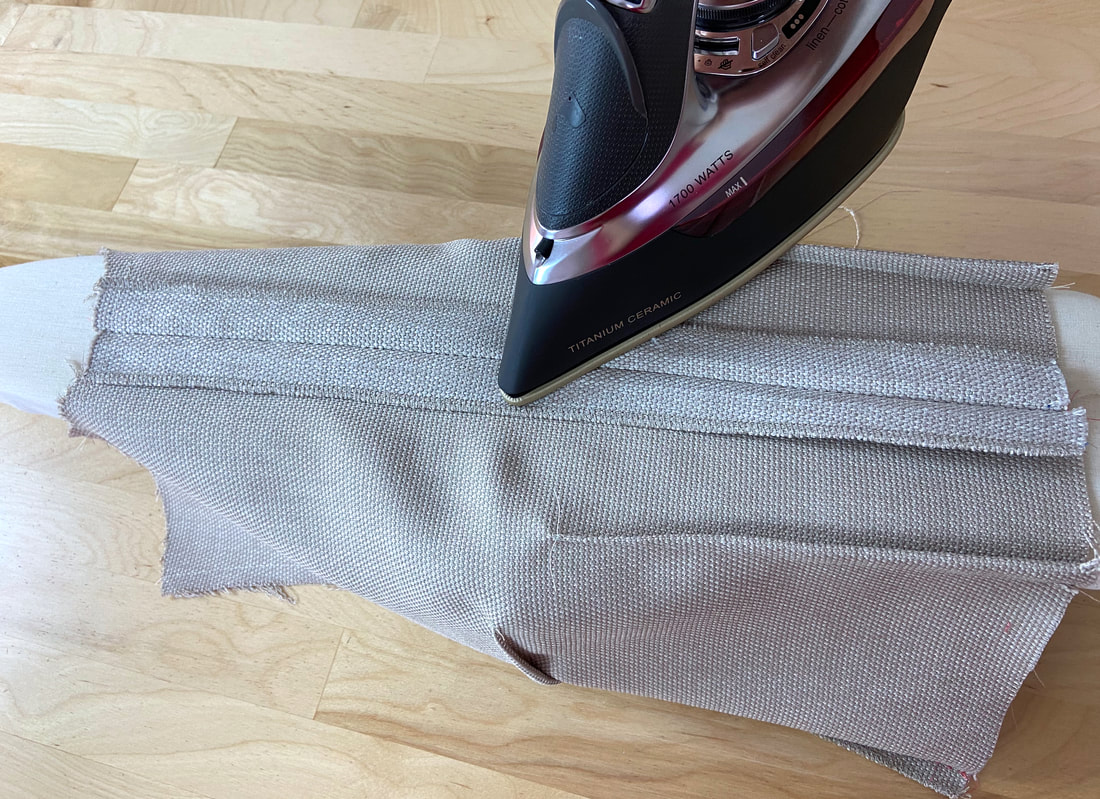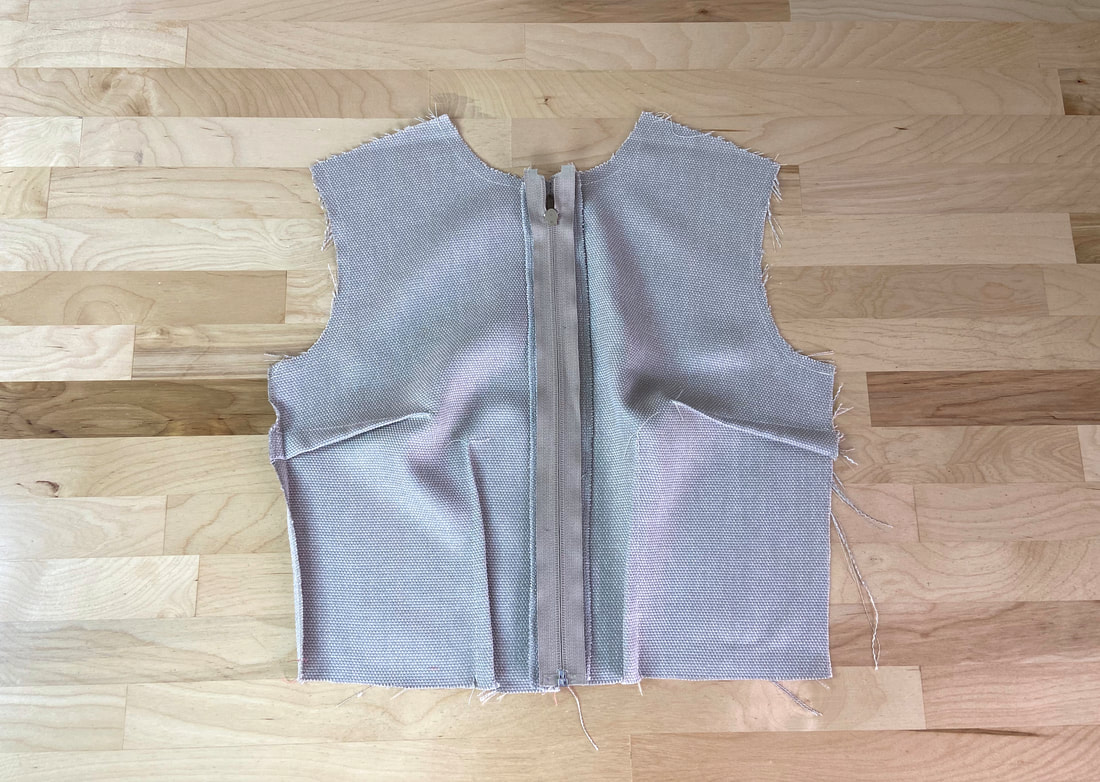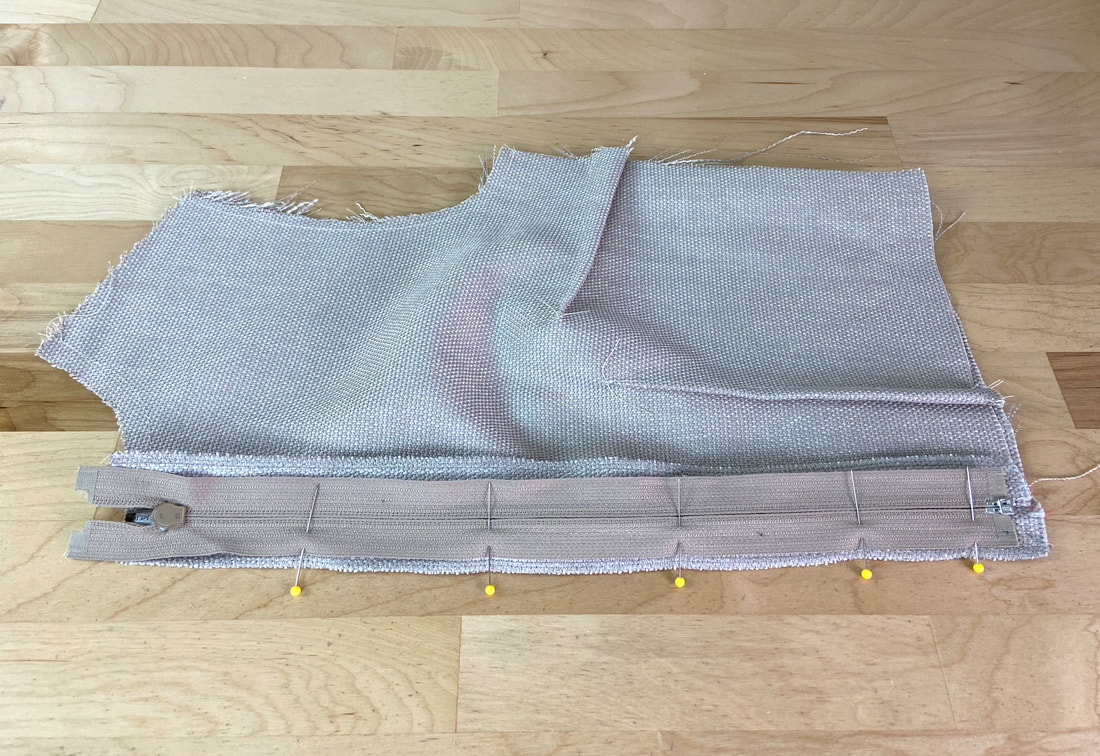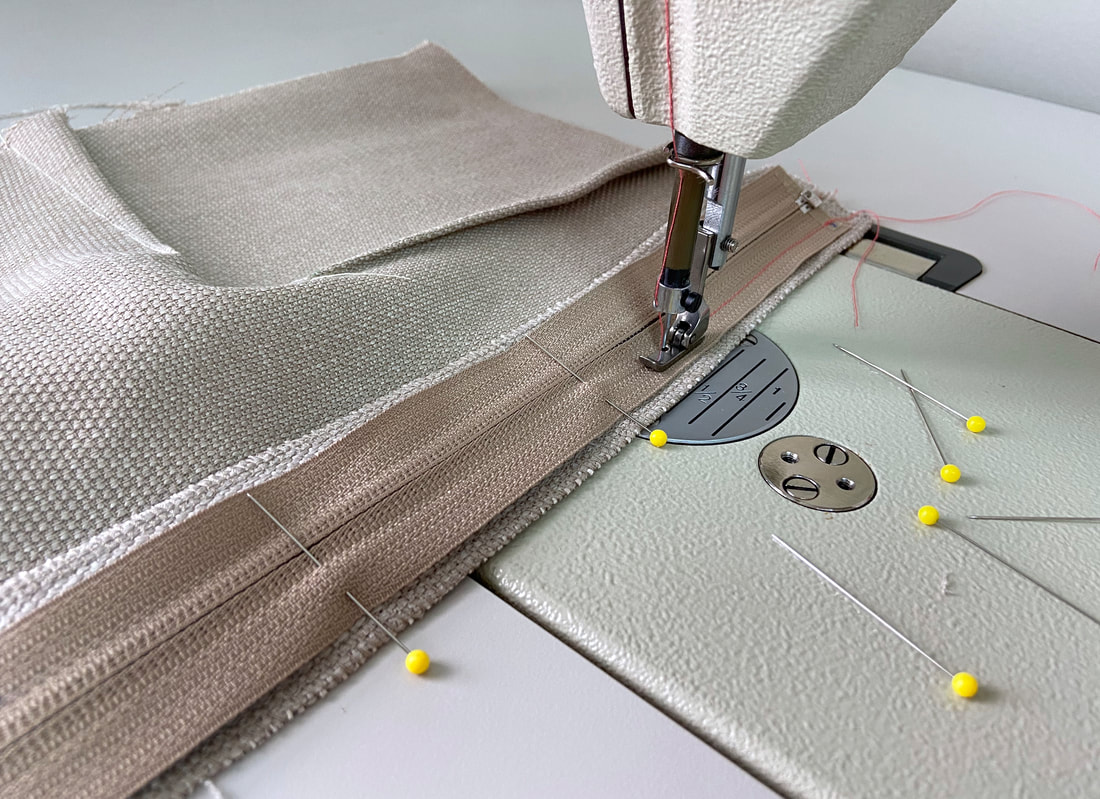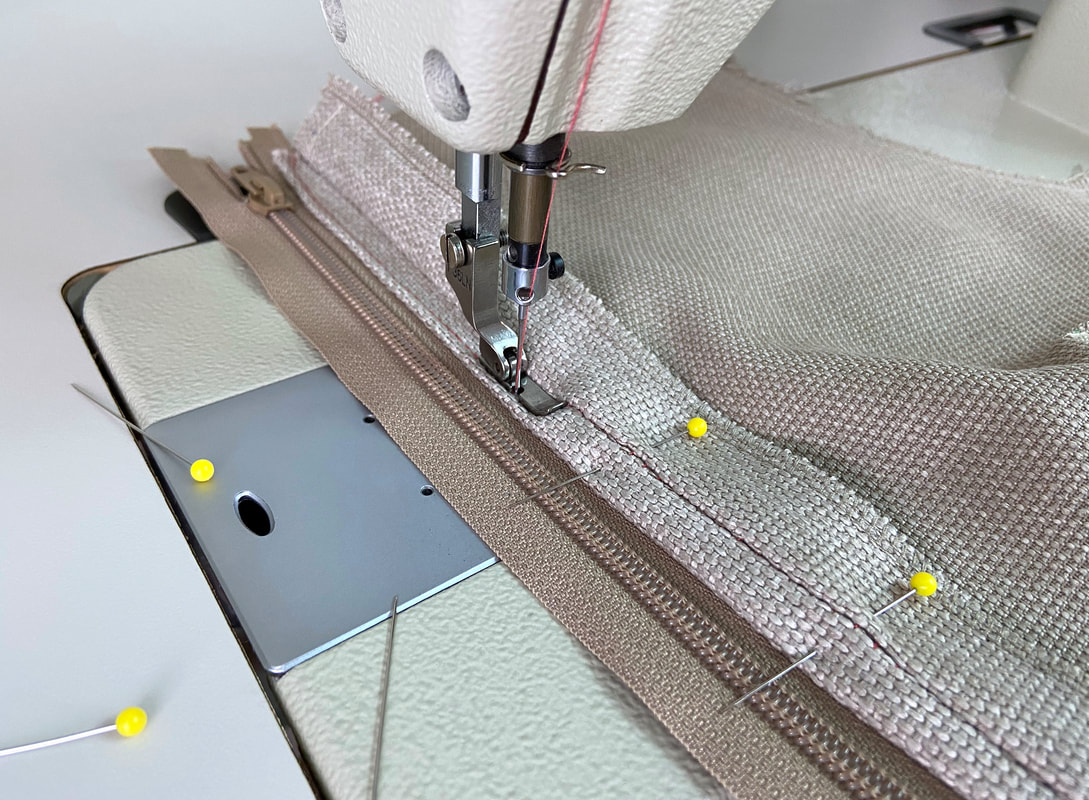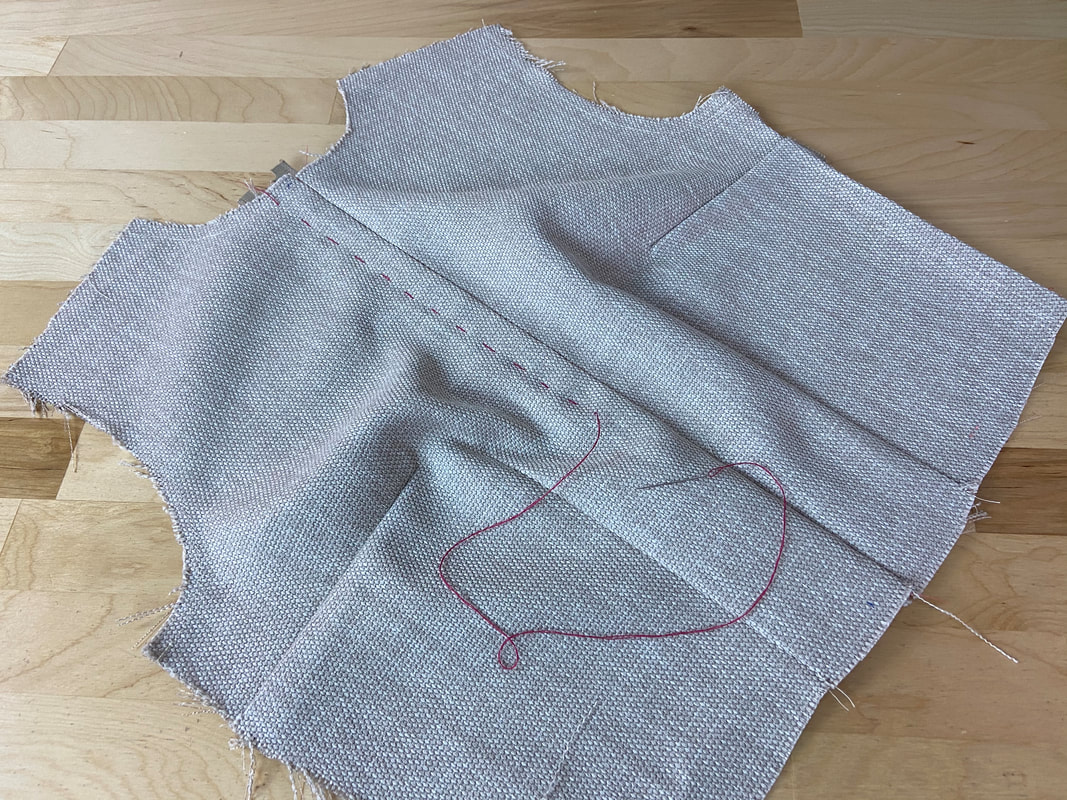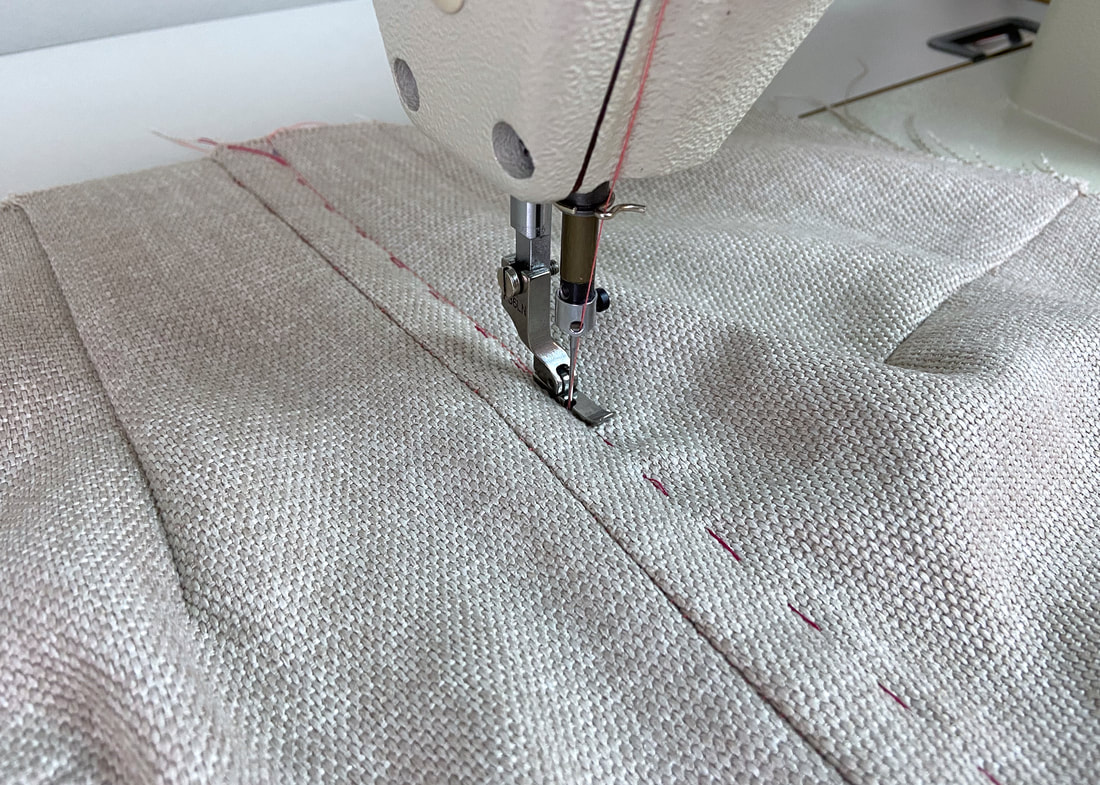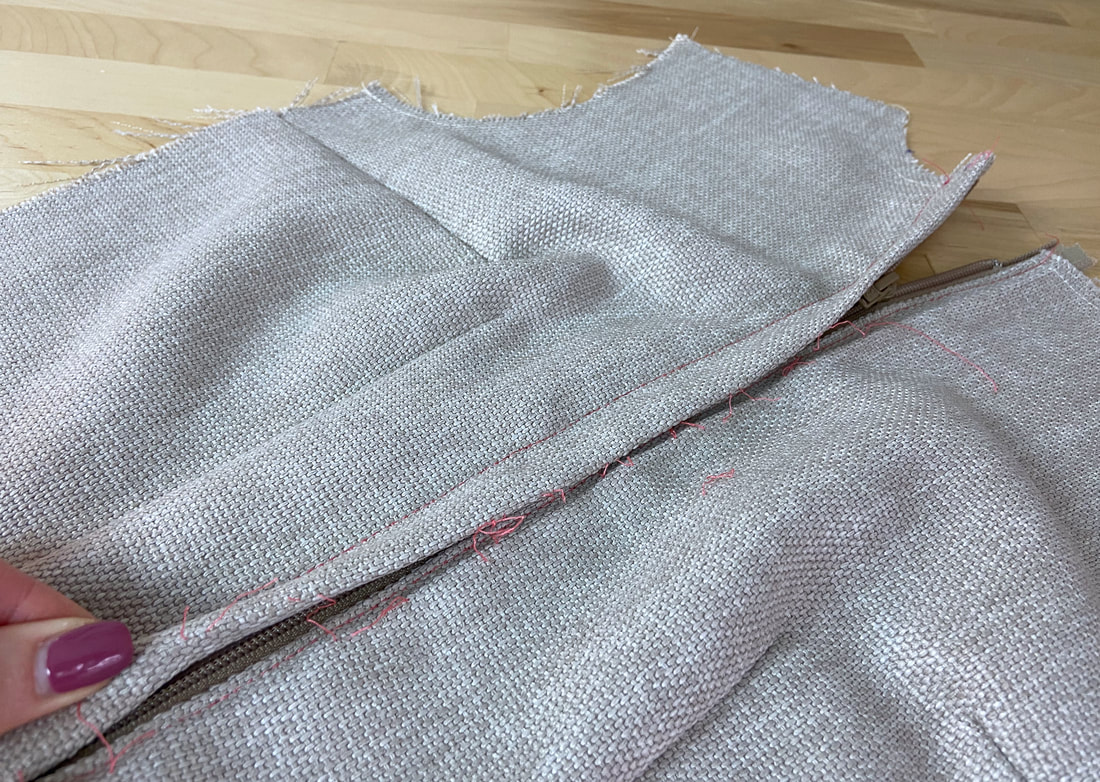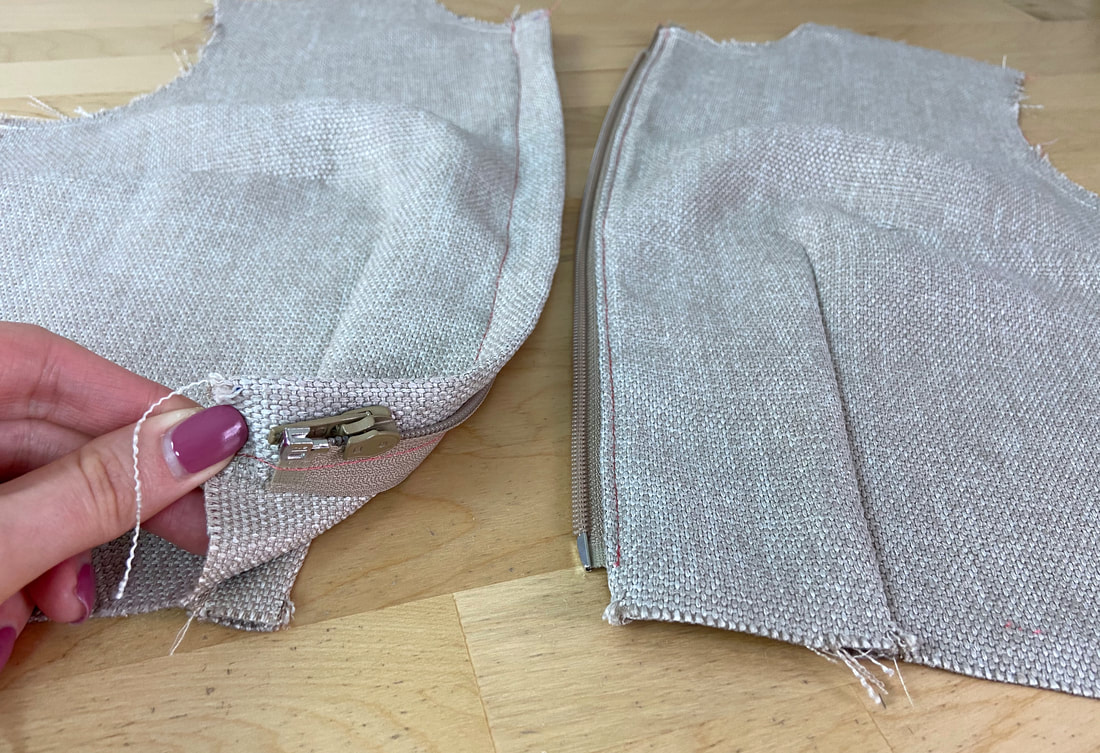The beauty of sewing a fully separating zipper that is enclosed with a placket is that you have more leeway in the type of separating zipper you can use. Since the zipper is fully hidden underneath the placket, you can get away with a plastic coil zipper even if it is a little off in terms of color.
Speaking of color, it is of course, always best practice to match the color of the zipper to that of the garment (or find a suitable/desirable contrast). With a placket, the zipper stays hidden when in closed position. However, when the separating zipper is fully open, the zipper tape and teeth become visible from the right side of the garment. Keep that in mind as you choose the most appropriate zipper. If you can’t find a good matching color, use one that provides an intentional color contrast with the rest of the garment.
Sewing a placket-enclosed separating zipper is almost identical to sewing a lapped zipper application. The only difference is that the zipper opening fully separates. This means that the topstitched placket extends from the top edge of the garment all the way to the bottom.
Considering the zippered seam opens fully, it is important to enclose the individual seam allowance edges with a finish that will look clean when the zipper is in open position and visible from the outside of the garment.
Sewing A Placket-Enclosed Separating Zipper
With a separating application, it is best to first insert the zipper, then sew the side seams, shoulder seams, and clean finish the top and bottom edges of the garment. In this case, the top edge refers to the neckline and the bottom is the garment’s hem.
Facings, binding, or strip bands should be applied to the seam allowance after the zipper has been stitched.
If possible, always leave the hemline for last.
For optimal comfort, keep the fabric layers as flat as you can during the zipper construction process.
1. Align the opening seam edges to each other as you would with any regular seam: face sides touching and top and bottom edges aligning. Insert pins horizontally to keep the two fabric layers together.
2. Switch your machine setting to a basting stitch (longest stitch length) and stitch the garment opening edges closed following the designated seam allowance. If the seam is built for a placket-enclosed separating zipper opening, the seam allowance should be at least 1/2” in width. For best results, ¾” -1” seam allowance is preferred.
3. At this point, clean finish the seam allowance edges individually. You can use binding, a fold-and-stitch technique, or a simple overedge stitch as shown above.
4. Clip every 5-8 basting stitches using a seam ripper as shown. Be careful not to pull the seam apart in the process.
5. Separate the fabric layers and lay them flat on the table. With the wrong side facing up, open the seam allowance edges and press gently with your iron.
Place the zipper face down such that the zipper teeth are directly on top of the basted seam, and its length is equally positioned between the neckline and hemline. Conventionally, there should be at least an extra 1/4” distance from the zipper stops both at the top and bottom of the finished edges.
6. Keeping the tab up, align the right zipper tape to the right seam allowance edge. Insert pins horizontally to hold the two layers in place as shown.
7. With the zipper tape facing up, machine baste on top of the woven stitching guideline (on zipper tape) through the zipper tape and seam allowance layer underneath. Use a zipper presser foot instead of a regular presser foot for this task. A zipper presser foot is slimmer and facilitates stitching next to zipper coils.
8. Fold the seam allowance such that the face of the zipper is exposed as shown. Align the fold closer to the zipper teeth but not overlapping them. Iron the fold gently and insert a few pins horizontally for added stability.
9. Using a zipper foot, machine stitch next to fold, catching the zipper tape and folded seam allowance underneath.
10. Continuing to keep the zipper closed, flip the seam on its right side and flatten it a little with your hand.
11. Keeping the seam flat on the table, hand baste at about 3/4” from the seamline thorough the garment, zipper tape and seam allowance layer underneath. Start at the very top edge of the neckline and hand baste down to the garment's hem.
12. Switch your machine setting to a regular stitch, and topstitch carefully next to the hand basting through the garment, zipper tape and seam allowance layers as shown. Start the topstitch at the top fabric edge (neckline) ending at the very bottom (hem). Use a zipper presser foot.
Remove the hand basting once the topstitch complete.
13. Pull the clipped basted seam edges apart gently and remove the basting threads applied in Step 1.
The front garment should now open and separate completely when unzipped. When zipped, the zipper chain is securely hidden underneath the topstitched placket.
At this point, continue sewing the rest of the garment, including the remaining seams, neckline and hemline edges.

